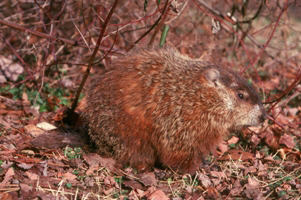Woodchucks lose about 33-40% of their weight during hibernation. Most of the loss happens because they rouse and warm up every week or two.
Photo Credit: Geoffrey A. Hammerson
Marmota monax
Common Name: woodchuck
Other Common Names: groundhog
Animal Guild: Mammal
Class > Order > Family: Mammalia > Rodentia > Sciuridae
